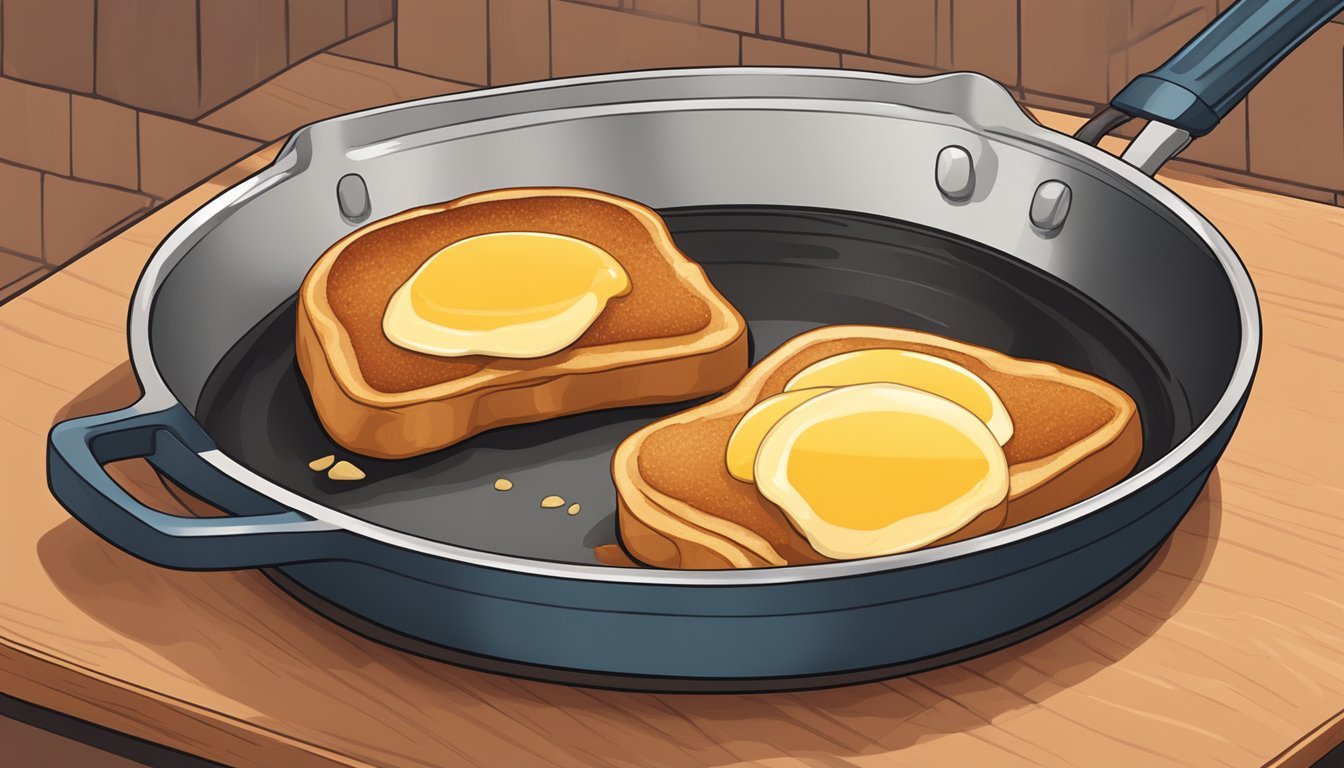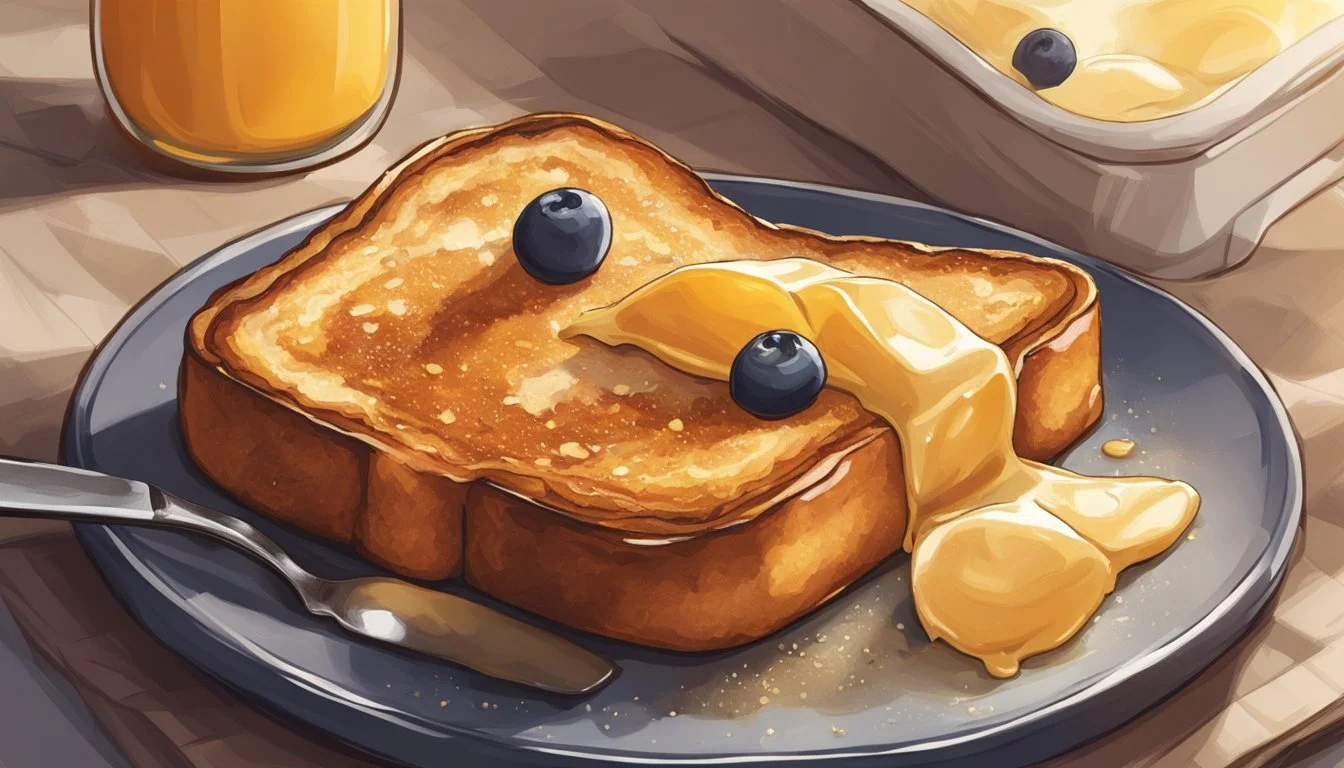How Long Does Freshly Prepared French Toast Last?
Shelf Life and Storage Tips
Freshly prepared French toast is a beloved breakfast dish made by soaking bread in a mixture of eggs, milk, and often a touch of sugar and cinnamon, then frying it until golden brown. This simple yet delicious recipe is a staple in many households, offering a comforting start to the day with its rich flavor and custardy center.
When making French toast, understanding its freshness and storage is important for both taste and food safety. At room temperature, French toast should not sit out for longer than two hours due to the risk of bacterial growth. To extend its shelf life and maintain the quality of the ingredients, French toast should be refrigerated soon after cooking.
In the refrigerator, French toast keeps its best quality for 5 to 7 days when stored properly in an airtight container. If there’s a need to keep it for a longer period, freezing is an effective option. Frozen French toast can be stored for 1 to 2 months, often separated by wax paper to prevent sticking and then wrapped in foil or placed in freezer bags. It can be reheated directly from the freezer for a convenient and quick breakfast option on busy mornings.
Ingredients and Preparation
French toast is a classic breakfast dish that can be made with a variety of breads and customized with spices and extracts. The longevity of French toast once prepared relies heavily on the quality and freshness of the ingredients used, as well as the preparation and cooking techniques applied.
Selecting the Right Bread
For optimal results, the bread chosen for French toast should be slightly stale or dry, as it soaks up the batter without falling apart. Challah, brioche, or a thick-cut Texas toast are excellent choices because they have a sturdy yet light structure which holds up well during soaking and cooking.
Preparing the Batter
The batter for French toast consists primarily of eggs and milk, whisked together until well combined. For every four slices of bread, typically three large eggs and about two-thirds of a cup of milk are used. Adding a teaspoon of vanilla extract, a pinch of cinnamon, and a tablespoon of sugar enhances the flavor. Some recipes also include a dash of nutmeg to add depth. Bread slices should be soaked in this mixture long enough to penetrate the surface but not so long that they become overly soggy.
The Cooking Process
Cooking French toast involves heating a skillet or griddle over medium heat and lightly coating it with butter or non-stick spray. Once the bread has been soaked properly, it is cooked until golden brown, approximately 3 to 4 minutes per side. The goal is to achieve a custard-like consistency inside with a slightly crisp exterior. It’s crucial to control the heat to avoid burning the exterior before the inside is properly cooked.
Storing Freshly Made French Toast
Proper storage methods can significantly extend the shelf life of freshly made French toast. To avoid food spoilage and food poisoning, it's crucial to store it correctly, whether at room temperature, in the fridge, or freezer.
Room Temperature Storage
Freshly made French toast should be kept at room temperature for no longer than 2 hours. Beyond this time frame, the risk of bacterial growth increases, which could lead to foodborne illness.
Refrigerating French Toast
To preserve French toast for 1-2 days, cooling it down and placing it in an airtight container before storing it in the fridge is recommended. In the refrigerator, French toast maintains its quality for up to 5 to 7 days while an airtight seal prevents moisture and contaminants.
Freezing Instructions
For longer storage, French toast can be frozen. The following steps will ensure optimal freshness:
Arrange the pieces in a single layer on a baking sheet to freeze until solid.
Transfer frozen slices to a resealable heavy-duty freezer bags or airtight containers, separating layers with parchment paper.
Label with the current date as French toast can last for 1-2 months in the freezer.
To serve, French toast can be reheated directly from the freezer without the need to thaw.
These storage guidelines help retain the French toast's desired quality and taste while minimizing the risk of spoilage and extending its shelf life efficiently.
Reheating French Toast
When reheating French toast, one strives to maintain its inviting texture and warmth. The goal is to achieve a result that is as close to fresh as possible, with a crisp edge and a soft center.
Using a Toaster or Oven
Toaster Reheating: Ideal for individual slices, reheating French toast in a toaster offers a quick and convenient method. Simply place the French toast in the toaster and set it to a low or medium setting. Watch it closely to avoid burning.
Oven Reheating:
Preheat the oven to 350°F (177°C).
Place the French toast on a wire rack on a baking sheet to allow for even heating.
Heat for about 5-8 minutes, until thoroughly warmed.
Microwave Reheating
For a swift reheating option, one can use a microwave, although this may slightly alter the texture:
Lay the piece of French toast on a microwave-safe plate.
Cover with a damp paper towel to add moisture and prevent drying out.
Heat on high for 15-20 seconds, check the warmth, and repeat in short intervals if necessary.
Skillet Warming
Reheating French toast on a skillet simulates the original cooking method:
Warm a skillet over medium heat and lightly coat with butter or non-stick cooking spray.
Place the French toast in the skillet for 1-2 minutes per side, ensuring it doesn't burn while restoring its crisp texture.
Quality and Degradation
The quality of French toast after preparation is affected by storage conditions which influence taste and texture. As time progresses, degradation occurs due to both microbial growth and changes in the physical properties of the toast.
Signs of Spoilage
French toast can show signs of spoilage, including the presence of mold or an off-odor, indicating bacterial growth. Consumption of spoiled French toast poses a risk of foodborne illness. It is crucial to inspect the French toast visually and smell it before consumption, looking for:
Mold spots, typically green or black
Off-smelling or unusual odors
Ensuring the Best Taste
To preserve the delicious taste of French toast, one should store it in the refrigerator within two hours of cooking. This inhibits bacterial growth and maintains quality. Store French toast in an airtight container, and consider separating layers with parchment paper to retain freshness. For best results:
Refrigerate promptly
Keep in an airtight container
Preventing Sogginess
To prevent soggy French toast, one must cool it completely before refrigeration and freeze individual slices if a longer storage time is needed. Soggy French toast results from excess moisture, so storage techniques aim to minimize this. Methods to maintain texture include:
Cooling to room temperature before refrigeration
Freezing slices in a single layer
Using parchment paper to separate layers when freezing
Customization and Serving Ideas
When it comes to freshly prepared French toast, the versatility in serving and customization options is nearly endless. Here are some specific ways to enhance your French toast.
Creative Toppings
Fruit: Adding fresh fruit like sliced strawberries, bananas, or a berry compote introduces a natural sweetness and a burst of color.
Whipped Cream and Nut Butter: A dollop of whipped cream or a drizzle of nut butter such as almond or peanut butter can enrich the flavor profile.
Nuts: Chopped nuts, like pecans or walnuts, add a satisfying crunch.
Syrup and Powdered Sugar: Classic maple syrup and a dusting of powdered sugar never fail to please the palate.
Accompaniments
Bacon: Crispy bacon offers a savory contrast to the dish's sweet elements.
Ice Cream: For an indulgent twist, a scoop of vanilla ice cream can be served alongside or atop warm French toast.
Syrup and Sauces: Various syrups like maple, berry, or even flavored syrups enhance the toast's sweetness and can be poured over just before serving.
Alternate French Toast Dishes
French Toast Sticks: They are a fun, dippable option that children especially enjoy with various sauces.
Bread Pudding: It repurposes the French toast concept into a dessert-worthy dish when mixed with custard and baked.
Bold Flavors: Experimentation with spices such as cinnamon or nutmeg can yield delightful variations on the classic recipe.
Practical Tips and Tricks
Maximizing the shelf life and flavor of French toast, one can embrace certain strategies from using the right bread to efficient storing techniques.
Making French Toast in Bulk
For individuals wanting to make French toast in bulk, it's essential to use a consistent method for soaking and cooking the slices to ensure even flavor and texture. Once cooked, they should lay the slices in a single layer on a baking sheet and allow them to cool. They can then package the toast in portions for easier access later.
Freezing and Storing Tips
Freezing: If one wants to store French toast for more than a couple of days, they should freeze it. Here's a step-by-step method:
Lay cooled French toast on a baking sheet and freeze until solid.
Transfer to airtight containers or resealable freezer bags, with parchment paper between layers.
Label and date the packaging.
French toast can be stored frozen for 1 to 2 months.
Refrigeration: For shorter storage, one should:
Place the French toast in an airtight container.
Refrigerate for 5 to 7 days for optimal quality.
Bread Selection Tips
The choice of bread is a key factor in the quality of French toast. They should opt for:
Day-Old Bread: Bread that's slightly stale, such as challah, brioche, or French bread, absorbs the egg mixture well without falling apart.
Texture and Thickness: Thicker slices and bread with a denser texture hold up better during cooking and soaking.








